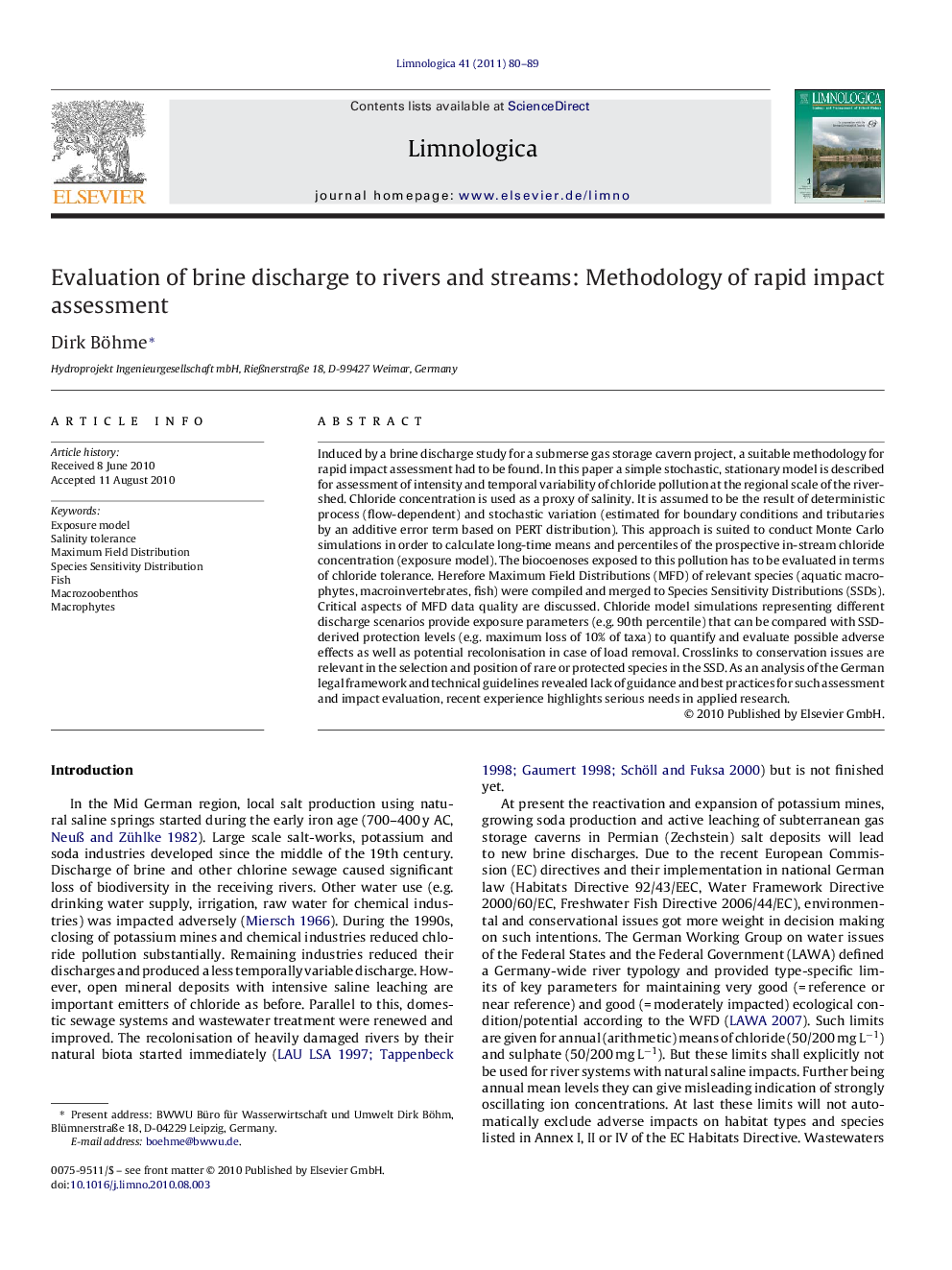| Article ID | Journal | Published Year | Pages | File Type |
|---|---|---|---|---|
| 4400538 | Limnologica - Ecology and Management of Inland Waters | 2011 | 10 Pages |
Induced by a brine discharge study for a submerse gas storage cavern project, a suitable methodology for rapid impact assessment had to be found. In this paper a simple stochastic, stationary model is described for assessment of intensity and temporal variability of chloride pollution at the regional scale of the rivershed. Chloride concentration is used as a proxy of salinity. It is assumed to be the result of deterministic process (flow-dependent) and stochastic variation (estimated for boundary conditions and tributaries by an additive error term based on PERT distribution). This approach is suited to conduct Monte Carlo simulations in order to calculate long-time means and percentiles of the prospective in-stream chloride concentration (exposure model). The biocoenoses exposed to this pollution has to be evaluated in terms of chloride tolerance. Herefore Maximum Field Distributions (MFD) of relevant species (aquatic macrophytes, macroinvertebrates, fish) were compiled and merged to Species Sensitivity Distributions (SSDs). Critical aspects of MFD data quality are discussed. Chloride model simulations representing different discharge scenarios provide exposure parameters (e.g. 90th percentile) that can be compared with SSD-derived protection levels (e.g. maximum loss of 10% of taxa) to quantify and evaluate possible adverse effects as well as potential recolonisation in case of load removal. Crosslinks to conservation issues are relevant in the selection and position of rare or protected species in the SSD. As an analysis of the German legal framework and technical guidelines revealed lack of guidance and best practices for such assessment and impact evaluation, recent experience highlights serious needs in applied research.
